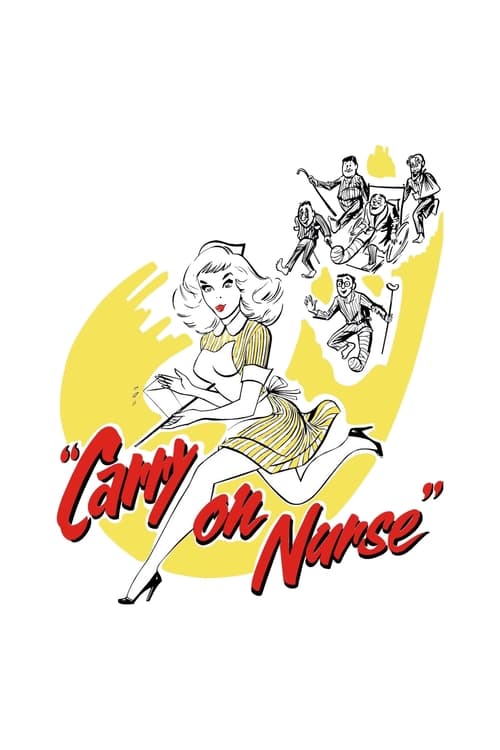Carry On Nurse was the hit movie for the UK in 1959, topping the charts there. Hammer Horror was also humming along at the same time, with Terence Fisher’s The Hound of the Baskervilles, The Mummy, and The Man Who Would Cheat Death all being released that year (and all starring Christopher Lee). But Carry On Nurse topped them all.
The film was also a big hit in the US, although it didn’t chart in the top ten. Here, it had to compete with Charlton Heston’s Ben Hur, Some Like It Hot, and North By Northwest. But it ran in Los Angeles for over two years. Although only the second movie, it was the biggest financial hit for Carry On.

Nurse was also to first to explore the English health system, a subject the series would return to three more times in Carry on Doctor (1967), Carry on Again, Doctor (1969), and Carry On Matron (1972) .
Shirley Eaton is back, and we’ll get to see her one last time in Carry On Constable before she leaves for her gold-painted destiny. Jill Ireland also has a small part as a woman smitten with Kenneth Williams’s bookworm character; a few years later she would play Spock’s girlfriend in “This Side of Paradise” — a bad run of romantic luck — before starring in many films with her husband Charles Bronson. Joan Sims makes her first of an astonishing twenty-four appearances, placing her just behind Kenneth Williams and just ahead of Charles Hawtrey in the endurance rankings.
Perhaps learning a bit from Carry On Sergeant, no real attempt is made here at developing a plot. Instead we have scenes from an open hospital ward over a period of about a week or so. The patients are a mixed lot — a journalist, a boxer, a middle-class gent with snobbish tendencies, a studious student. We also have a Charles Hawtrey, a man always in a taxonomic class by himself. We get introduced to each separately, but eventually the characters coalesce around a drunken plot to perform their own amateur surgery.

Joan Sims: Second only to Kenneth Williams in Carry On appearances.
Everyone lives in terror of the matron, whose daily inspections spark a flurry of tidying, patient-chiding, and general interruption. The nurses scurry back and forth across the ward, taking away newspapers and insisting patients get under the covers. “Matron’s rounds!” one hisses at a patient. “I don’t care if she’s triangular!” he barks back.
Although politics were never particularly heavy-handed, social commentary played quite a role in these earlier Carry On films. One great example is in this movie. During Matron’s Rounds, one of the patients stages a protest. He will not get under the covers unless the Matron can provide an adequate medical reason. She can’t, but after she leaves the ward she rounds on the Sister in charge: “This ward is the slackest in the hospital. And the untidiest. See that all of the beds are remade at once.” She storms off. The Sister angrily passes the buck to the senior staff, who also passes it on down the ladder — each rank reclaiming the dignity they lost to the person above them by shouting at the person below them.
This is not a movie for subtle performances or character development, but there are some story arcs. The bookworm finds love, the boxer comes to terms with his injury, and of course even the demanding colonel in his private room gets his in the end.

Maybe the amateur surgery isn’t such a great idea.

